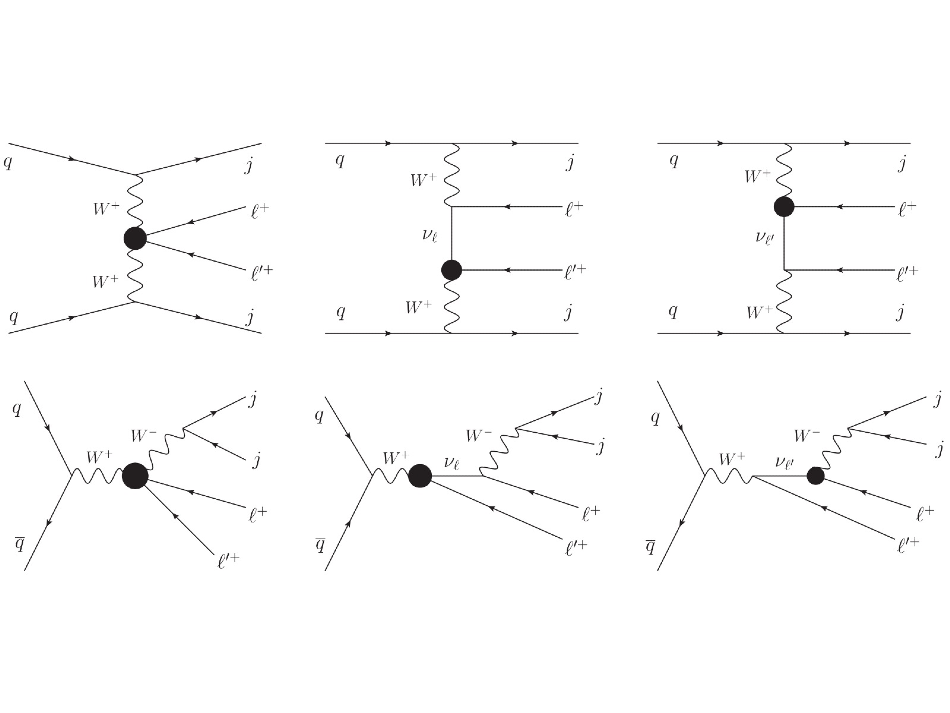Sep 15 2020
Under the guidance of Kanazawa University, a group of researchers has recommended a new mathematical framework to interpret the properties of the underlying particles known as neutrinos.
 Feynman diagrams for pp → ℓ+ ℓ'+ jj via the dimension-seven lepton-number violating operators. Image Credit: Kanazawa University.
Feynman diagrams for pp → ℓ+ ℓ'+ jj via the dimension-seven lepton-number violating operators. Image Credit: Kanazawa University.
The study may help cosmologists make advancements on the apparent enigma of the presence of matter in the Universe.
The Standard Model of particle physics that describes the fundamental constituents of matter and the forces acting between them has witnessed incredible experimental success, resulting in the finding of the Higgs boson—the last predicted particle—in 2012.
But the Standard Model fails to address some of the long-lasting problems in cosmology—for example, the identity of “dark matter” that is known to exist there but cannot be seen, and why there is a large amount of matter in the Universe in comparison to the antimatter.
Several investigators assume that the ghost-like particles known as neutrinos could be a crucial part of the answer.
Neutrinos, which seldom interact with other matter, are produced by nuclear reactions, such as those powering the sun, and trillions of these neutrinos travel through the human body every second.
Experiments have also demonstrated that, while neutrinos are not massless, they are relatively lighter when compared to other particles. This has made physicists to theorize that neutrinos get their mass from a varied process in comparison to other particles, known as the “Seesaw mechanism.”
The research team, under the guidance of Kanazawa University, has now developed a novel theory to describe the exceptional properties of neutrinos.
We used the seesaw mechanisms with five- or seven-dimensional operators to describe the interaction of a neutrino with two lepton particles and two force-carrying W bosons.
Mayumi Aoki, Researcher, Kanazawa University
Leptons are essentially a group of elementary particles containing electrons, neutrinos, etc. But solving such equations indicated violations of the Standard Model’s prediction that the number of leptons is invariably conserved.
To move beyond the Standard Model, we have to explain why lepton conservation is sometimes violated, albeit to a very small degree. A tiny imbalance of one part in a trillion may explain the why all matter didn’t get annihilated by antimatter after the Big Bang.
Mayumi Aoki, Researcher, Kanazawa University
Aoki continued, “Our work explains the origin of the neutrino mass and also provides predictions directly testable by the Large Hadron Collider.”
The extremely light masses of neutrinos may hold the key to solving the most important questions that have perplexed humanity for millennia.
Journal Reference:
Aoki, M., et al. (2020) Probing charged lepton number violation via ℓ±ℓ'±W∓W∓. Physical Review D. doi.org/10.1103/PhysRevD.101.115019.